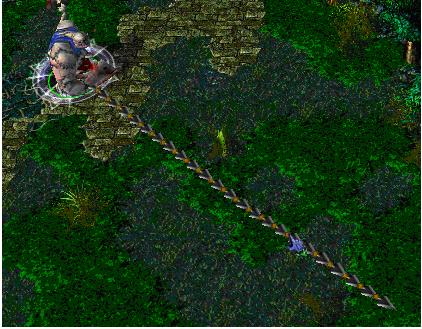In the game of DotA, Pudge’s meat hook is actually
the most horrible thing for most of the heroes. The hook is made up of several
consecutive metallic sticks which are of the same length.

Now
Pudge wants to do some operations on the hook.
Let us number the
consecutive metallic sticks of the hook from 1 to N. For each operation, Pudge
can change the consecutive metallic sticks, numbered from X to Y, into cupreous
sticks, silver sticks or golden sticks.
The total value of the hook is
calculated as the sum of values of N metallic sticks. More precisely, the value
for each kind of stick is calculated as follows:
For each cupreous stick,
the value is 1.
For each silver stick, the value is 2.
For each golden
stick, the value is 3.
Pudge wants to know the total value of the hook
after performing the operations.
You may consider the original hook is made
up of cupreous sticks.
The input consists of several test cases. The first
line of the input is the number of the cases. There are no more than 10
cases.
For each case, the first line contains an integer N,
1<=N<=100,000, which is the number of the sticks of Pudge’s meat hook and
the second line contains an integer Q, 0<=Q<=100,000, which is the number
of the operations.
Next Q lines, each line contains three integers X, Y,
1<=X<=Y<=N, Z, 1<=Z<=3, which defines an operation: change the
sticks numbered from X to Y into the metal kind Z, where Z=1 represents the
cupreous kind, Z=2 represents the silver kind and Z=3 represents the golden
kind.
For each case, print a number in a line representing
the total value of the hook after the operations. Use the format in the
example.
Case 1: The total value of the hook is 24.

#include<stdio.h>
typedef struct{
int l,r;
int val;//这是标记作用,0代表是混着的(这个区间多种价值的stick)其余表示这个区间的stick的价值
}point;
point tree[300001];
int sum=0;
void build(int v,int l,int r)//建树
{
tree[v].l=l;
tree[v].r=r;
tree[v].val=1;
if(l==r) return ;
int mid=(l+r)/2;
build(2*v,l,mid);
build(2*v+1,mid+1,r);
}
void update(int v,int l,int r,int m)//更新
{
if(tree[v].l==l&&tree[v].r==r)
{
tree[v].val=m;
return ;
}
if(tree[v].val!=0)//将父类中的标记进行下传
{
tree[2*v].val=tree[v].val;
tree[2*v+1].val=tree[v].val;
tree[v].val=0;
}
int mid=(tree[v].l+tree[v].r)/2;
if(mid>=r) update(2*v,l,r,m);
else if(l>mid) update(2*v+1,l,r,m);
else {
update(2*v,l,mid,m);
update(2*v+1,mid+1,r,m);
}
}
void query(int v,int l,int r)//查询
{
if(tree[v].l==l&&tree[v].r==r&&tree[v].val)
{
sum+=tree[v].val*(tree[v].r-tree[v].l+1);
return ;
}
int mid=(tree[v].l+tree[v].r)/2;
query(2*v,l,mid);
query(2*v+1,mid+1,r);
}
int main()
{
int t,n,m,i,j=1,a,b,c;
scanf("%d",&t);
while(t--)
{
scanf("%d",&n);
build(1,1,n);
scanf("%d",&m);
for(i=1;i<=m;i++)
{
scanf("%d%d%d",&a,&b,&c);
update(1,a,b,c);
}
query(1,1,n);
printf("Case %d: The total value of the hook is ",j++);
printf("%d.\n",sum);
sum=0;
}
return 0;
}

